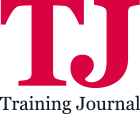The education system isn’t getting young people ready for work – Jeff Bergin explores the options
A recent report from the U.S. Chamber of Commerce Foundation highlights the persistent challenge facing the country’s labour market: even as thousands of jobs are created each month, many positions – especially roles that require highly specialised skills – remain unfilled. There’s no one reason for this talent shortage, but it’s certainly being exacerbated by the ongoing practice of treating learning and working like separate entities.
Many businesses don’t think college graduates are leaving school with the skills they need for the workplace
We already know this approach doesn’t work. It seems that every few weeks, a study or survey comes out confirming that many businesses don’t think college graduates are leaving school with the skills they need for the workplace. Meanwhile, students transitioning from school to careers are finding that the education system and the workforce are similarly misaligned. They may discover that they invested in an education that either didn’t deliver adequate training or that it didn’t match their interests or values.
And the mismatch is a costly one. Students are making big investments of time and money in education with no guarantee of a meaningful outcome on the other side, while businesses continue to be stymied and slowed by a lack of skilled talent.
This mismatch is particularly troubling in this new era of generative AI when so much is changing so quickly. By the end of the decade, according to one estimate, AI could accelerate the automation of jobs that account for up to 30% of the annual hours worked in this country. In addition, a dynamic economy might require an additional 12 million workers to transition from declining to emerging industries. But the technology driving these changes is accelerating faster than high schools and colleges can keep up. It simply takes too long to earn traditional credentials, not to mention developing the curriculum to get those programs to students in the first place.
If our nation’s schools, colleges and companies are serious about meeting the challenge of a rapidly evolving economy, they need to work harder to make learning and work resemble one another.
Prepare to succeed at work
I’m hardly the first person to make this argument, and the good news is that some promising examples of blurring already exist. Apprenticeships are the classic work-based learning model that combine classroom instruction and paid employment. Internships and externships present students the opportunity to apply what they’ve learned in college while giving organisations the chance to show learners how these skills and knowledge function in a workplace context. Bootcamps and academies centred on specific skills and roles quickly prepare workers to take available jobs in in-demand fields. A growing number of training programs incorporate “workplace problems” into curricula to help learners develop the habits of mind to address such challenges in actual practice.
But there’s more that employers and education providers alike can do to incorporate workplace practices into the way they design and deliver learning experiences.
Employers, for their part, should find ways to embed learning into the flow of work — to make the modalities of learning and working as similar as possible. Hybrid and remote work are here to stay, involving global teams that are working together across regions, countries, time zones and offices. That means flexibility is key, and self-regulation is a core skill to build. Considering employees’ workload, schedule and remote work preferences in the process of designing training programs will not just make it easier for employees to complete those programs, but also help them better integrate working and learning.
Businesses also have a unique opportunity to help their employees apply what they learn in real time. By balancing the teaching of routine tasks with complex problem solving, they can help their workers master the skills they need to succeed on the job, and begin to organically and independently apply them to their day-to-day roles.
Education providers, on the other hand, should consider simple practices like holding short “stand-up” meetings each morning, or using workplace tools like Slack to communicate, collaborate, and conduct work. These are widespread and straightforward practices in the business world; what if they were just as common in education and training programs? By more closely mirroring the actual work environments and contexts, educators can better replicate business practices and help learners acquire skills that they will need on day one of a new job.
Better learning, better performance
Blurring these lines isn’t just good for employment — it’s also a more effective way to learn. By deeply integrating learning into the workplace, authentic experiences – with real teams, real tools, and real problems-to-be-solved – not only create the perfect lab for learning, they also make learning stickier, enabling learners to build the knowledge, memory, and behaviours to continue to apply what they learn. And given the pace of technological change, integrated experiential learning closes the gap that can happen between formal and workplace learning, especially for tools and practices that may quickly become outdated. This optimises the learning process, ensuring that skills immediately transfer into practice.
Blurring the lines between education and work requires a mindset shift by employers and education providers alike. On the business side, it means investing more in ongoing learning and talent development efforts – either internally or through partnerships with education providers – that can help workers prepare today for the skills they might need tomorrow. On the education side, it means acknowledging that it’s just as important to teach the day-to-day realities of being in the workforce as the underlying theories and skills that help you get there.
Blurring the lines solves multiple challenges for education and training providers and employers. But the true winners are working learners themselves, who learn best when learning and work are blended. Our future as a nation depends on workers coming of age in the AI generation being properly prepared to secure good jobs that pay family-sustaining wages. Employers and educators alike must embrace blurring in order to be clear-eyed about what they should do today to prepare for the economy of tomorrow.
Jeff Bergin is Vice President of Learning and Experience, General Assembly




